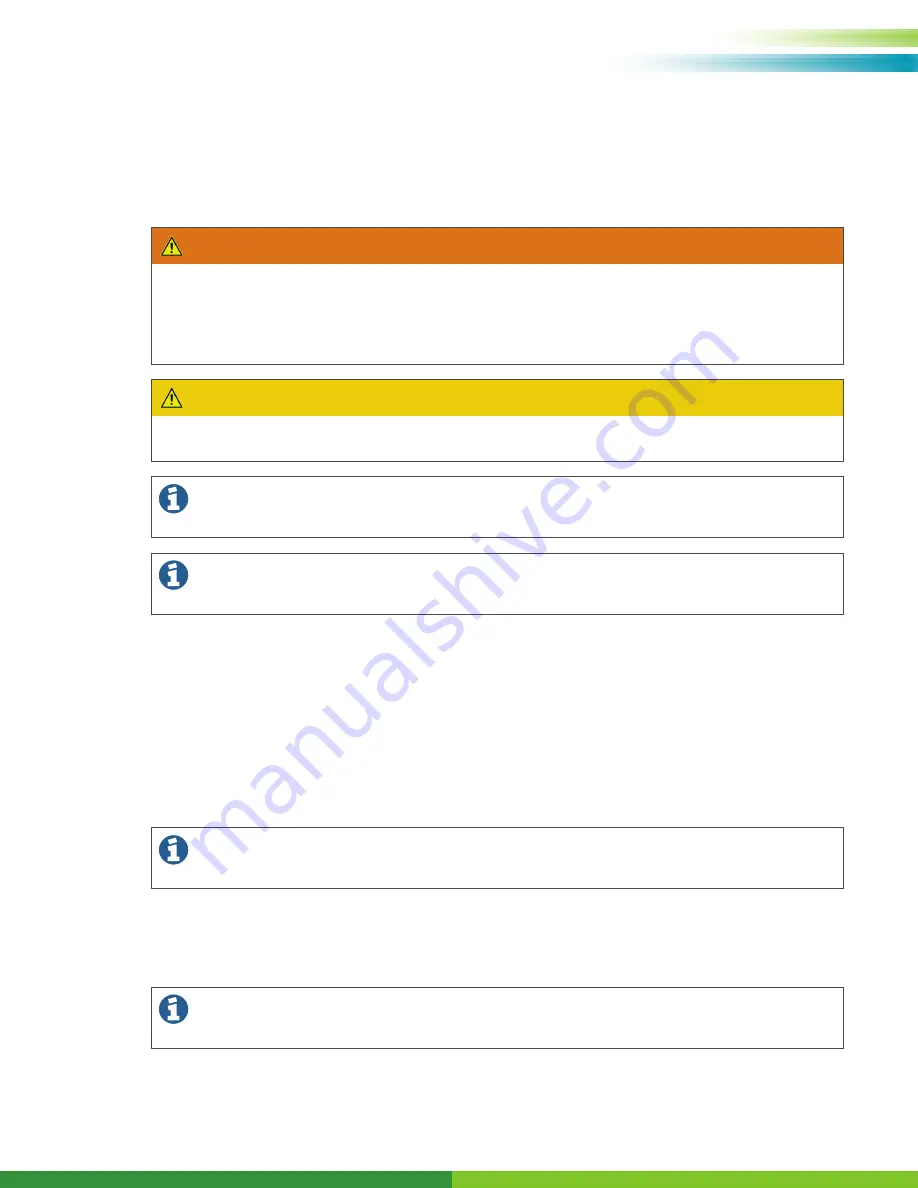
41
Component Replacement
5.2.4
Manual Bleed Procedure
Below are the steps for the manual fill and bleed procedure using the WABCO TOOLBOX™ Software
version 12.7 to bleed the hydraulic brake system and SmartTrac™ ABS module.
WARNING
Do not let the brake fluid in the master cylinder get below the minimum level during the bleeding
operation. Keep the master cylinder reservoir filled with new DOT-approved brake fluid, as specified
by the original equipment manufacturer. Failure to keep the fluid in the brake reservoir above the
minimum level could result in more air entering the system, making it difficult to effectively bleed the
system resulting in increased stopping distance.
CAUTION
Incorrect bleeding may result in system malfunction due to the presence of air in the closed
hydraulic system.
The manual bleed procedure may require a second person to help apply the brake pedal.
The WABCO TOOLBOX™ Software version 12.7 and beyond will support the following bleed
procedure.
1. Apply the parking brake and block the tires.
2.
Fill the reservoir with new DOT 3 or DOT 4 hydraulic brake fluid. Refer to the vehicle specifications to
determine which fluid to use.
3.
Press the brake pedal five times using the stroke between 1/3 travel and maximum travel.
4.
Release the pedal for five to 10 seconds. Air bubbles may rise into the reservoir while depressing and
releasing the pedal.
5.
Repeat Step 3 and Step 4 another three times or until sufficient pedal resistance is felt. Monitor the
fluid in the brake reservoir during this step to make sure the fluid level stays above the minimum. Add
brake fluid as necessary.
Repeatedly verify that the fluid in the reservoir does NOT fall below the minimum level. Add
brake fluid when necessary.
6.
Bleed the brake system starting with the fitting farthest from the SmartTrac™ module (typically the right
rear).
Place a wrench on the brake actuator bleeder fitting and then attach a length of clear plastic tubing to
the bleeder fitting. Verify that the tube fits snugly.
The tools, tubing and container used for bleeding should be brake fluid safe and must be able
to withstand the effects of brake fluid.
7.
Submerge the tubing in a container of clean brake fluid. With the brake pedal pressed to maximum
travel, loosen the bleeder fitting until fluid begins to flow (about 3/4 turn). When the brake pedal has
reached the maximum stroke, tighten the bleed screw and allow the brake pedal to return to the top
pedal position. Repeat this process until the hydraulic brake fluid flowing out of the fitting is free of air
bubbles.






























